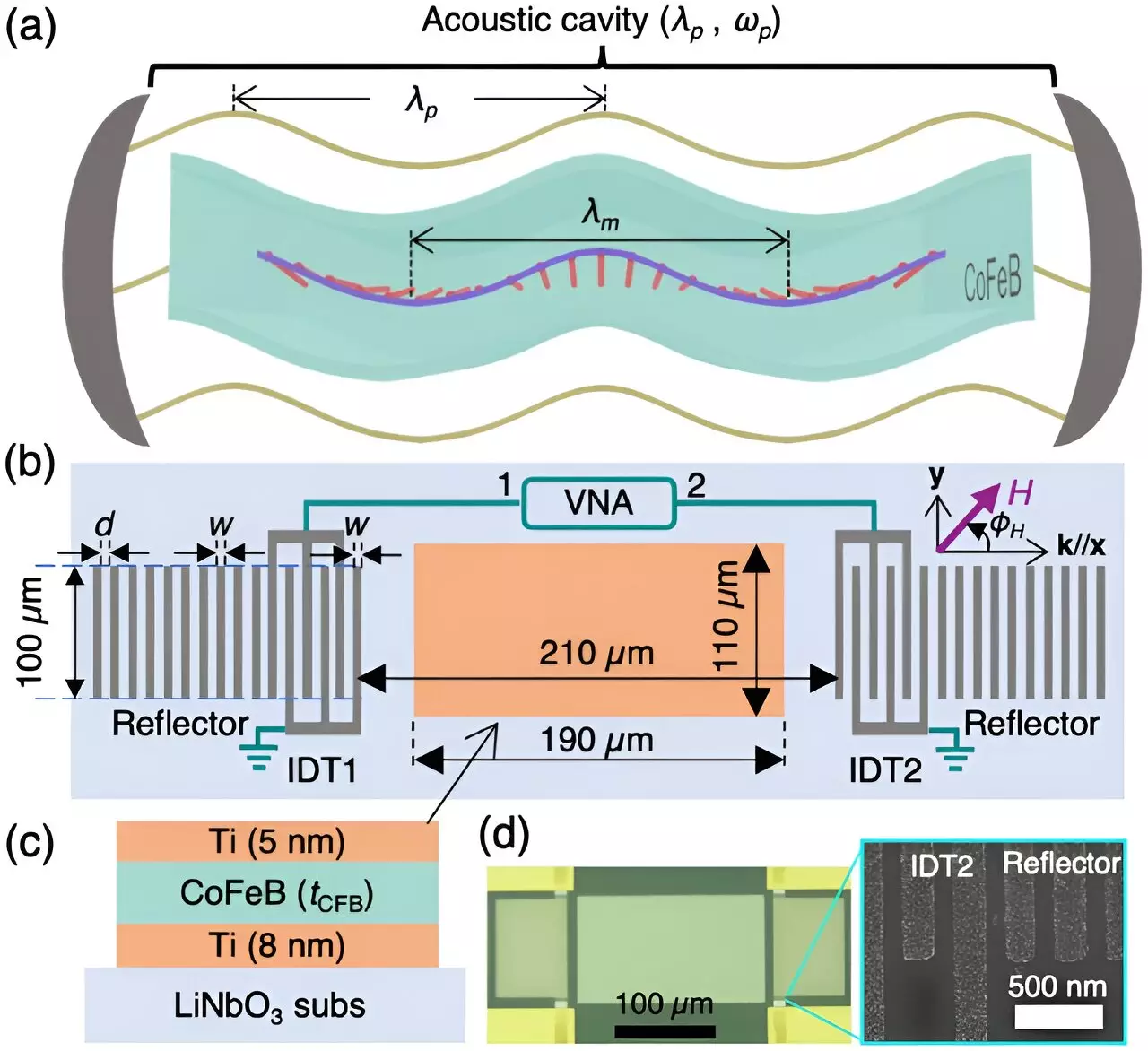In a groundbreaking study conducted by a team of researchers from the RIKEN Center for Emergent Matter Science in Japan, a significant achievement has been made in coupling two distinct forms of waves – magnons and phonons – within a thin film at room temperature. This development paves the way for the creation of innovative hybrid wave-based devices that have the potential to revolutionize information storage and manipulation techniques.
Traditional computing devices rely on the movement of electric charge, specifically electrons, to function. However, there are inherent limitations to this approach. The speed at which electrons can travel is restricted, and their movement results in the generation of heat, leading to energy losses and environmental concerns. As a response to these challenges, scientists are exploring alternative methods that harness wave-like forms of energy such as sound, light, and spin, as they offer the possibility of creating more efficient and lossless devices.
The research published in Physical Review Letters focuses on the integration of magnons, which are quasiparticles representing the collective spin excitation, and phonons, acoustic phenomena formed by surface waves in a thin film. By closely coupling these two wave-like forms, the researchers were able to create a novel hybrid state that has promising implications for information processing technologies. Unlike previous attempts by other research groups, this team overcame the obstacle of poor alignment between regular sound waves and magnets by utilizing shear sound waves that are better suited for magnetic interactions.
A key element that facilitated the successful integration of magnons and phonons in the thin film was the implementation of a nano-structured surface acoustic wave resonator. This on-chip device enabled the confinement of ultrasound waves to a specific location, enhancing the generation of shear sound waves and promoting a robust coupling between the surface sound waves and the magnets within the resonator. This breakthrough allowed the researchers to achieve strong magnet-sound coupling in a Co20Fe60B20 film at room temperature.
Implications for Information Processing Devices
The researchers involved in the study anticipate that their findings will significantly contribute to the exploration of coherently coupled magnon-phonon quasiparticles. This advancement holds the potential to advance the development of hybrid wave-based information processing devices with minimal energy losses. By leveraging the synergistic interaction between magnons and phonons, new opportunities for enhancing information storage and communication technologies may emerge, leading to exciting progress in the field of information processing.
The successful coupling of magnons and phonons in a thin film represents a significant milestone in the advancement of wave-based information processing devices. Through innovative techniques and the use of nano-structured surface acoustic wave resonators, the research team has demonstrated the feasibility of creating a novel hybrid state that has far-reaching implications for the future of information technology. As further research is conducted in this area, the potential for developing more efficient, lossless devices that can revolutionize information processing remains promising.


Leave a Reply